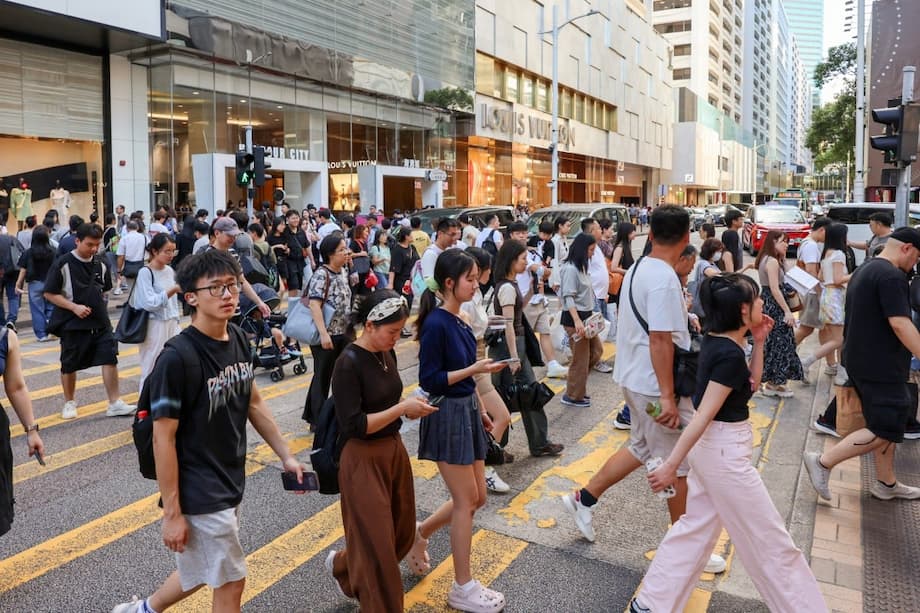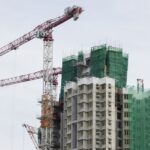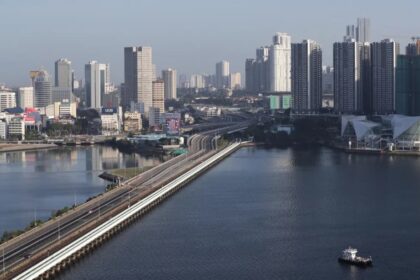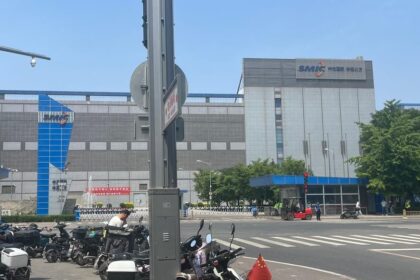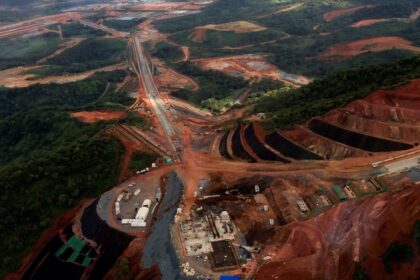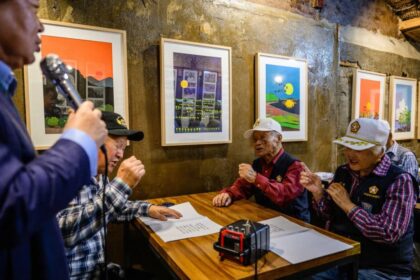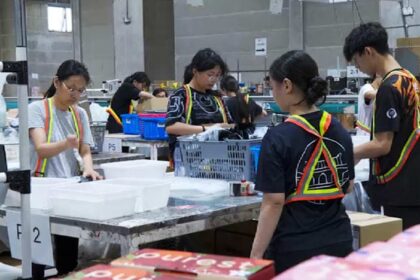A surge in arrivals, a shift in behavior
Hong Kong welcomed a strong start to the National Day golden week. Hotels filled across key districts and the city reported more than 80 per cent occupancy in the first three days as 676,000 visitors arrived, a 6.3 per cent rise year on year. Streets around Victoria Harbour, the West Kowloon Cultural District and theme parks buzzed with visitors drawn by fireworks, lantern carnivals and the Tai Hang fire dragon dance. Even with the crowds and high occupancy, hotel leaders are warning that a subtle shift in visitor behavior is reducing the number of overnight stays.
- A surge in arrivals, a shift in behavior
- Why high occupancy is not translating into longer stays
- How mega events and transport shape visitor choices
- Rates, revenue and the overnight mix
- Who is visiting and where they spend
- Comparing Hong Kong with Macau
- What hotels and retailers want
- The outlook for the rest of the year
- Highlights
Tourism officials hailed the momentum. The city’s tourism chief said the flow of visitors was overwhelming, pointing to a packed calendar of events and a vibrant street scene that extended beyond the usual shopping corridors. She added that upcoming celebrations would continue to woo travelers through the rest of the holiday period.
After sharing the new visitation figures, the tourism chief described how the event lineup is intended to keep the city lively throughout the week. She highlighted the return of signature cultural displays and seasonal attractions that traditionally draw both local families and travelers from across the border.
Introducing her remarks during a broadcast interview, the tourism chief said the events are helping to spread crowds and keep the city energized.
“The flow of visitors must be overwhelming in this golden week as we still have other signature events to woo tourists, such as the Fire Dragon Dance in Tai Hang and other activities for the Mid Autumn Festival celebrations.”
For hotels, the issue is not footfall, it is how many of those visitors choose to sleep in the city and for how long. Occupancy can look healthy while room rates soften and the average length of stay shortens. Some luxury properties reported full houses during the busiest nights, yet mid scale and budget hotels depend heavily on overnight visitors to lift revenue across the week. Industry executives say more guests are coming for the day and heading back across the border after evening events, a trend that boosts retail and dining but limits hotel gains.
Why high occupancy is not translating into longer stays
Hoteliers describe a clear pattern. Major events end earlier in the evening to smooth cross border travel. Transport links are efficient. People enjoy the show and return home the same night. That approach helps prevent bottlenecks and has kept crowd control robust, yet it also reduces the incentive for visitors to book rooms, especially budget travelers and families who can enter and leave in a single day.
Caspar Tsui, executive director of the Federation of Hong Kong Hotel Owners, said the city’s success in managing mega event crowds has an unintended side effect. He pointed to earlier finishing times for fireworks, concerts and other spectacles, a policy designed to avoid late night congestion at control points.
“There has been a noticeable increase in same day trips to Hong Kong among tourists, which may be partly attributed to the government’s strong focus on facilitating same day returns for major events such as fireworks displays and concerts earlier this year. While this approach offers convenience, it may inadvertently limit the opportunity to showcase Hong Kong’s wider range of attractions and reduce the likelihood of overnight stays.”
Border operations have been smooth during recent holiday periods, with large flows handled at rail and road crossings. West Kowloon’s Express Rail Link (XRL) terminal and the Lok Ma Chau Spur Line regularly process heavy volumes and, by design, make day visits extremely practical for residents of nearby mainland cities.
The length of stay problem
A hotel’s revenue depends on three basic levers: occupancy, average daily rate and the length of stay. When the visitor mix skews toward day trippers, accommodation demand becomes concentrated on a few marquee nights, rather than dispersed across the week. That can cap average daily rates in the shoulder days and limit revenue per available room. In short, rooms may be full on the busiest night but the overall week can still underperform if guests do not stay long enough.
Travel habits shifted after the pandemic. Many visitors are cost conscious and keep flexible itineraries. That favors same day trips made easier by rapid transport and seamless digital ticketing. For Hong Kong, the challenge is to convert a portion of these visitors into overnight guests without sacrificing the crowd control benefits of earlier event finish times.
How mega events and transport shape visitor choices
Hong Kong’s mega events policy aims to create a steady drumbeat of concerts, festivals and sports. The calendar spreads activities across different venues and neighborhoods, with coordinated transport and crowd management. That strategy has paid off in smoother operations and fewer late night bottlenecks. It also aligns with cross border demand patterns, since many visitors live a short train ride away and prefer to maximize the day and sleep at home.
Earlier end times
Ending high profile events earlier makes it easier for visitors to travel back the same evening. That reduces pressure on late night services and lets families and seniors avoid crowds. For hotels, this is a mixed blessing. It maintains a welcoming experience and builds goodwill, but it also reduces the natural push to book a room for convenience after a late finish.
Easier same day travel
Door to door journeys from Shenzhen or nearby Guangdong cities can be quick on the XRL and other links. With e-gates at control points and frequent trains, a visitor can arrive midday, shop and dine, catch an evening show, then be home before midnight. This convenience is a competitive strength for Hong Kong as a day trip destination, yet it takes careful programming and incentives to convert these visitors into overnight stays.
Rates, revenue and the overnight mix
Officials describe hotel performance as satisfactory this season, with some segments near full during peak nights. The tourism chief said a 90 per cent occupancy rate has become close to the norm during busy periods, and that luxury properties were full at the height of golden week. These are encouraging signs. Even so, industry data in past years showed that high occupancy did not always bring stronger rates, as discounting and package deals helped fill rooms.
The number that matters to hoteliers is not only how many rooms are sold, it is the price and how many nights each visitor stays. Before the pandemic, National Day often delivered a balanced mix of tour groups, families and free independent travelers. In 2023, nearly half of mainland visitors during the period were overnight guests, according to official figures, and overall hotel occupancy was around 90 per cent. If the share of same day visitors grows relative to overnight guests, hotels must work harder to lift average daily rates beyond the busiest night.
Price sensitivity is still high across the region. The Hong Kong dollar’s strength against some regional currencies and abundant accommodation options just across the border keep competitive pressure on room rates. For operators, curated experiences and value adds, such as attraction passes or dining credits, can matter as much as sticker price in convincing a traveler to stay the night.
Who is visiting and where they spend
Mainland travelers continue to drive the numbers. The first three days brought 676,000 arrivals, and officials see broad activity across the city, from Canton Road to neighborhood eateries. Retailers and restaurants rolled out promotions timed to the holiday. Theme parks, the Peak Tram and Ngong Ping 360 drew steady lines. For hotels, the upside is clearest when visitors combine a cultural event with a next day itinerary that includes museums, shopping districts and seaside neighborhoods.
Momentum this year extends beyond a single week. The city had already logged 36.5 million visitors from January to September, a 12 per cent increase over the same period last year, according to tourism officials. That trajectory underpins confidence that full year targets can be met. The question for hospitality is how to translate the headline numbers into steady demand across weekdays and a longer average stay.
Comparing Hong Kong with Macau
Macau offers a useful benchmark. Its tourism office projected around 1.2 million visitors for the autumn golden week, or about 150,000 per day, enough to keep occupancy near 90 per cent. Last year’s National Day period already saw a daily average above 100,000, with some nights above 90 per cent occupancy. Macau has leaned into a diversified events strategy, combining fireworks competitions, concerts and neighborhood festivals to encourage longer stays and increased non gaming spend.
Officials there have set targets to broaden the tourism base and extend length of stay, including investment in cultural districts and large scale attractions that sit alongside casino resorts. That playbook, which ties major events to multiple neighborhoods and convenient post event entertainment, is designed to keep visitors overnight and drive spending beyond a single venue.
What hotels and retailers want
Industry groups in Hong Kong are not asking to abandon early finishes that improve crowd safety. They want a mix that preserves smooth operations while creating reasons to stay the night. That could mean programming that stretches over multiple evenings, staggered end times across venues, or coordinated late dining and night time markets that begin after headline shows end. The idea is to create a second wave of activity that makes an overnight stay feel worthwhile.
The cross border advantage can also work in Hong Kong’s favor. Two city packages that pair Shenzhen or Guangzhou attractions with Hong Kong events can encourage travelers to split nights across the border. Hotels say bundled offers, next day experiences and transport add ons, combined with flexible check in and curated itineraries, help convert day trippers into overnight guests. The focus is on value and convenience rather than deep discounting.
The outlook for the rest of the year
The event calendar remains busy. The Wine and Dine Festival returns this month and is expected to pull visitors to the waterfront with tastings and chef showcases. In November, the National Games, cohosted across the Greater Bay Area, should lift regional travel and keep attention on Hong Kong. Tourism officials expect annual arrivals to reach about 49 million if the current pace holds. Hotels are preparing for peak weekends and looking to build stronger weekday demand with meetings, incentives and citywide promotions.
The city has proven it can handle large crowds with minimal disruption. The next test is to capture more overnight stays without compromising that operational success. A stronger mix of late evening programming, attraction bundles and neighborhood experiences would help. If the visitor base keeps growing and a larger share decides to stay the night, the holiday boom will translate into more consistent gains for accommodation providers.
Highlights
- Hotels reported more than 80 per cent occupancy in the first three days of National Day golden week as 676,000 visitors arrived, a 6.3 per cent year on year rise.
- The tourism chief said the city remains packed with signature events, and luxury hotels were full during peak nights.
- Hotel owners warn more travelers are making same day trips, a trend linked to earlier event finish times designed to ease cross border travel.
- Caspar Tsui said the convenience of same day returns limits chances to showcase more attractions and reduces the likelihood of overnight stays.
- Officials describe performance as satisfactory, but hoteliers say rates and length of stay, not just occupancy, will determine revenue.
- In 2023, about 45 per cent of mainland visitors during National Day were overnight guests and overall occupancy was around 90 per cent.
- Macau expected about 1.2 million visitors during the holiday and near 90 per cent occupancy, reflecting regional strength in travel demand.
- Hong Kong has welcomed 36.5 million visitors from January to September, up 12 per cent, and expects to reach about 49 million for the year.


